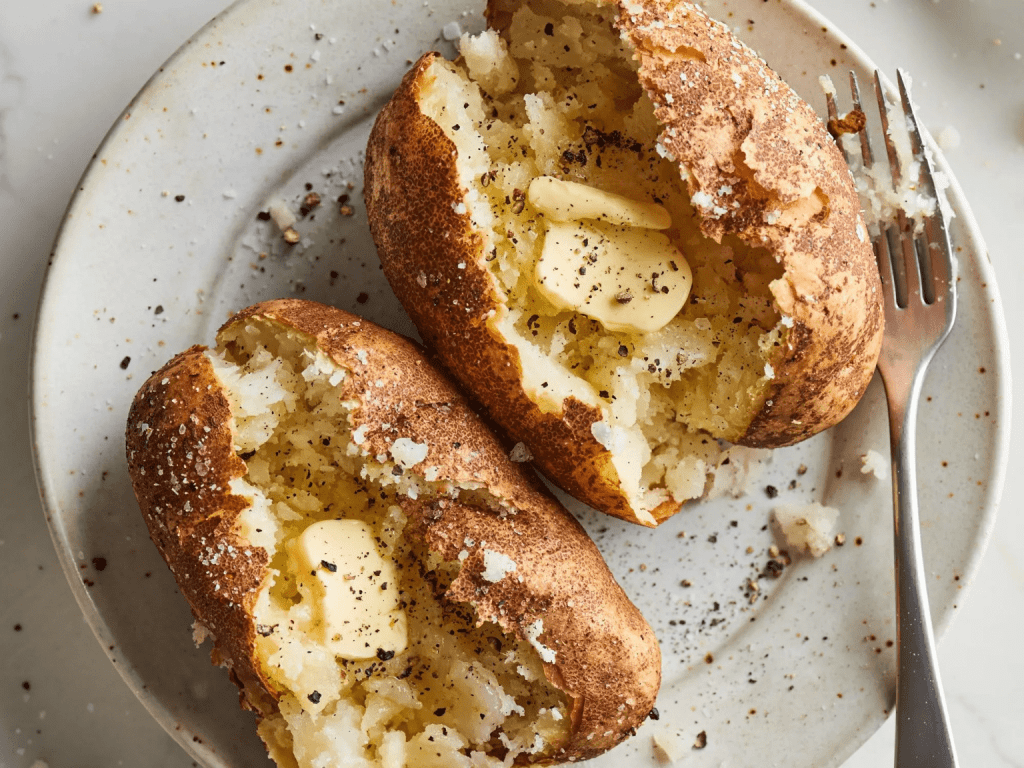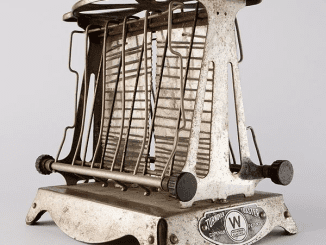Everyone loves a perfectly baked potato with crispy skin and a soft, fluffy interior. But what if, like my nana, you bake them for hours, and they’re still not right? Baking potatoes for five hours seems excessive, yet they’re sometimes undercooked. If you’re struggling with this, don’t worry—you’re not alone. Let’s dive into the art and science of potato baking, so you can enjoy perfectly baked potatoes every time without the marathon cook time.

Understanding Different Potato Varieties and Their Impact on Baking Time
One key factor often overlooked in baking potatoes is the type of potato you’re using. Not all potatoes are created equal; each variety has a unique texture and water content, which influences how they bake. Here’s a quick breakdown of popular types:
- Russet Potatoes: These are the go-to potatoes for baking because of their high starch content and fluffy texture. They tend to bake faster and produce that ideal soft interior.
- Yukon Gold Potatoes: A bit waxier than russets, Yukon Golds are also great for baking, though they may take slightly longer to reach the same fluffy consistency.
- Red Potatoes: These waxy potatoes have a denser texture, making them trickier to bake perfectly. They often retain a firm center, so they may require more time or a higher temperature.
- Sweet Potatoes: Although often treated similarly to russets, sweet potatoes have different sugars that can caramelize during baking, impacting their cook time.
Common Baking Mistakes That Cause Undercooked Potatoes
Even with the right type of potato, common mistakes can throw off your baking results. Here are some pitfalls to watch out for:
- Baking at Too Low a Temperature: Setting the oven too low (under 350°F) can lead to long baking times without the desired results. Aim for at least 400°F for standard baking.
- Inconsistent Sizes: Mixing large and small potatoes on the same baking sheet means the smaller ones will be done sooner. Stick to similar-sized potatoes for even cooking.
- Skipping the Piercing Step: Poking a few holes in the potato skin before baking allows steam to escape, preventing the potato from steaming itself and ensuring a more even bake.
- Wrapping in Foil: Many people wrap potatoes in foil, thinking it will help them cook faster. However, this traps moisture, leading to a steamed texture rather than the classic baked result.
Best Methods for Baking Potatoes: Oven, Microwave, and Alternatives
The traditional oven method is the most common, but there are faster options if you’re short on time. Let’s break down the various methods and their pros and cons.
- Oven Baking: Bake potatoes at 400°F for around 45–60 minutes. For crispier skin, bake without foil and place the potatoes directly on the oven rack or a baking sheet.
- Microwave: Microwaving a potato for 5-10 minutes can cook it quickly. However, this method doesn’t yield the crispy skin that oven baking does. You can microwave first, then finish in the oven for 10-15 minutes for a quick yet crispy result.
- Air Fryer: Air fryers have become a popular alternative, often reducing the time needed to achieve a crispy exterior. You can typically bake potatoes in an air fryer at 400°F for 35-45 minutes.
- Slow Cooker: For a hands-off approach, wrap potatoes in foil and place them in a slow cooker on low for 4-5 hours. This method is convenient, but the potatoes may have a softer, steamed texture.
Factors Influencing Baking Time: Potato Size, Type, and Oven Temperature
There’s no one-size-fits-all answer to how long potatoes need to bake, as several variables impact their cooking time.
- Size: Larger potatoes naturally require more time. A small-to-medium russet will generally be ready in 45-60 minutes, while a large one may take closer to 75 minutes at 400°F.
- Type: As mentioned earlier, starchy potatoes like russets bake faster than waxy varieties.
- Oven Efficiency: Every oven has its quirks. If your oven tends to run cooler, consider preheating it a little longer or using an oven thermometer to verify the temperature.

Experimenting to Find Your Ideal Baking Time
If five hours seems excessive, try adjusting your baking routine. Start by baking one potato at 400°F for one hour. If it’s still undercooked, continue in 15-minute increments until you find the right time for your specific setup. Not all ovens heat the same, so this small experiment can help you identify your oven’s sweet spot.
Another trick is to partially cook potatoes in the microwave first, reducing their overall oven time. Microwaving a potato for 5-7 minutes on high before baking can save nearly half of the time in the oven while still achieving that crispy texture.
How to Tell When a Potato is Perfectly Baked
The last thing you want is to serve undercooked potatoes, but what are the tell-tale signs of a perfectly baked one?
- Crispy Skin: The skin should feel firm and crisp, with a slight golden-brown hue.
- Fluffy Interior: When you cut open the potato, it should be soft and fluffy inside. A fork or skewer should glide in without resistance.
- Steam Release: A well-baked potato will release steam when punctured, indicating it’s fully cooked.

Troubleshooting Tips for When Potatoes Come Out Undercooked
If your potatoes frequently come out undercooked despite following these steps, here are some additional tips:
- Cut Them in Half: Halving or quartering larger potatoes can help them bake faster and more evenly.
- Preheat Thoroughly: Some ovens take longer to reach the desired temperature. Make sure your oven is fully preheated before placing the potatoes inside.
- Use a Baking Sheet: Placing potatoes directly on a baking sheet can improve heat distribution and prevent cold spots, ensuring a more even bake.
Conclusion: Achieving the Perfectly Baked Potato
In most cases, baking potatoes at 400°F for 45–60 minutes will yield the perfect combination of a fluffy interior and crispy skin. Factors like potato size, type, and even your specific oven can slightly change this time, but rarely would five hours be necessary. Understanding these nuances can save you time and frustration in the kitchen, helping you achieve potato perfection every time. Whether you stick to traditional baking, try an air fryer, or experiment with microwaving first, the key is to adjust based on your needs and setup. So next time you bake, skip the marathon and aim for the golden hour!


